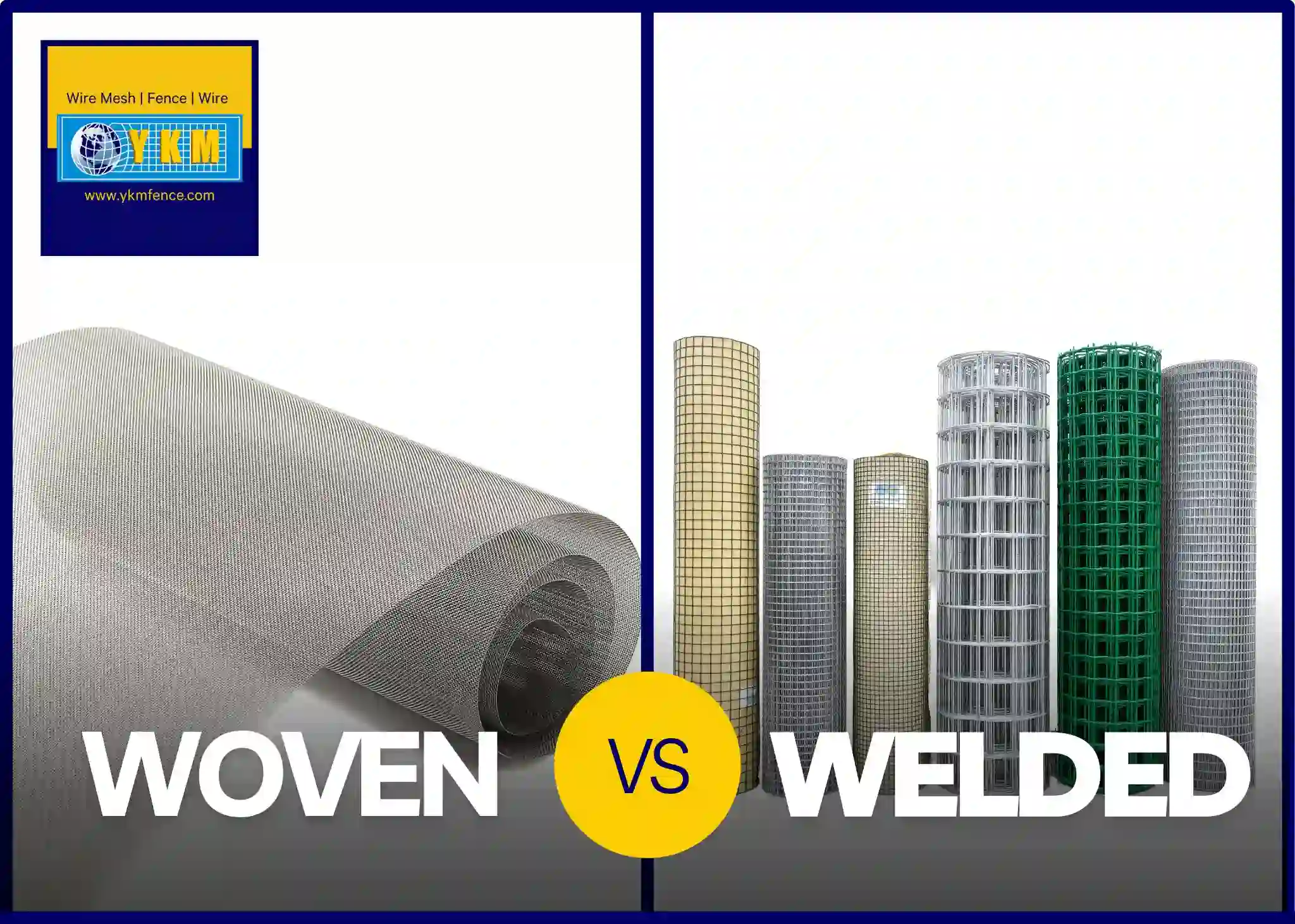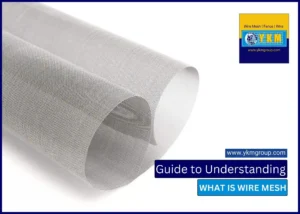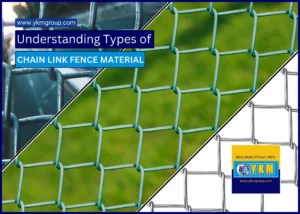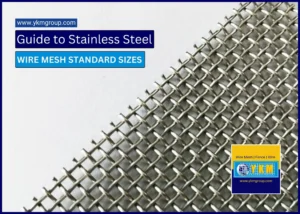Have you ever been curious to know the difference in Woven vs Welded Wire Mesh Pattern? Do they only differ by the pattern, or are there any other properties linked to them! You might have come across it in various applications, from construction to gardening.
When it comes to choosing the right material for fencing, you’ll likely encounter the age-old debate of woven wire vs. welded wire. Each has its unique characteristics, advantages, and disadvantages. This article will serve as your ultimate guide to understanding the differences between woven wire and welded wire mesh. We’ll delve into the nitty-gritty details and help you make an informed decision for your next project.
Woven Wire vs Welded Wire: The Basics
Woven Wire and Welded Wire are two distinct types of wire mesh used in various applications. Let’s start by breaking down the basics of each:
What is Wire Mesh?
To put it simply, wire mesh is a grid-like structure made from interconnected metal wires. These wires can be of various materials, including stainless steel, aluminum, epoxy coated and even brass. The main purpose of these mesh screens is to provide support, filtration, and separation in different applications.
What is Woven Wire Pattern: The Intricate Interlacing

Woven type mesh is a collection of preprogrammed metal wires that is interlaced together in form of a roll or sheet with certain pattern. It is known for its durability and flexibility, making it a popular choice for various applications.
To produce woven wire pattern, a certain number of wires fed via spool. There are two wires warp and weft. The warp spools selected according to weave pattern design of mesh. The heddle frame pushed wrap wire ups and down and weft wire which is known as shute wire, is driven between the wrap wires. The heddle frame locks the weft and wrap wire for next pattern.
Imagine a weaving loom in action, with wires crossing over and under each other, forming a tightly knit pattern. This interlacing creates a strong and flexible mesh that can withstand tension and pressure.
The weaves comes in various styles, including plain weave, twill weave, and Dutch weave, each suited for specific purposes. It’s like choosing between different types of fabrics for different clothing needs.
Learn more about woven wire mesh weaves.
What is Welded Wire Pattern: The Solid Connections

On the other hand, welded wire pattern is all about solid connections. Instead of weaving, this type of mesh is created by welding individual wires together at their intersections.
The metal wires are welded to each other at the point of each wire cross-sections with different welding technologies like TIG or spot welding.The result is a sturdy and rigid mesh that’s ideal for applications where stability is crucial.
How is it welded?
There are two main technologies used to manufacture welded mesh:
Electric Fusion Welding (EFW)
Electric Fusion Welding is a precise & semi-automatic welding technique that is widely used across industries. This type of machine is calculating the weld points for boxes. The welded junction is the intersection point for horizontal and vertical wires. With this technology, there is less chances for any distortion even the joint is so small.
Electrical Resistance Welding (ERW):
In this process, the wires are joint with the help of heat through passing the current. We can say that this is the melting point to joint wires together on high temperature.
Woven vs Welded Wire Mesh Pattern: A Comparative Analysis
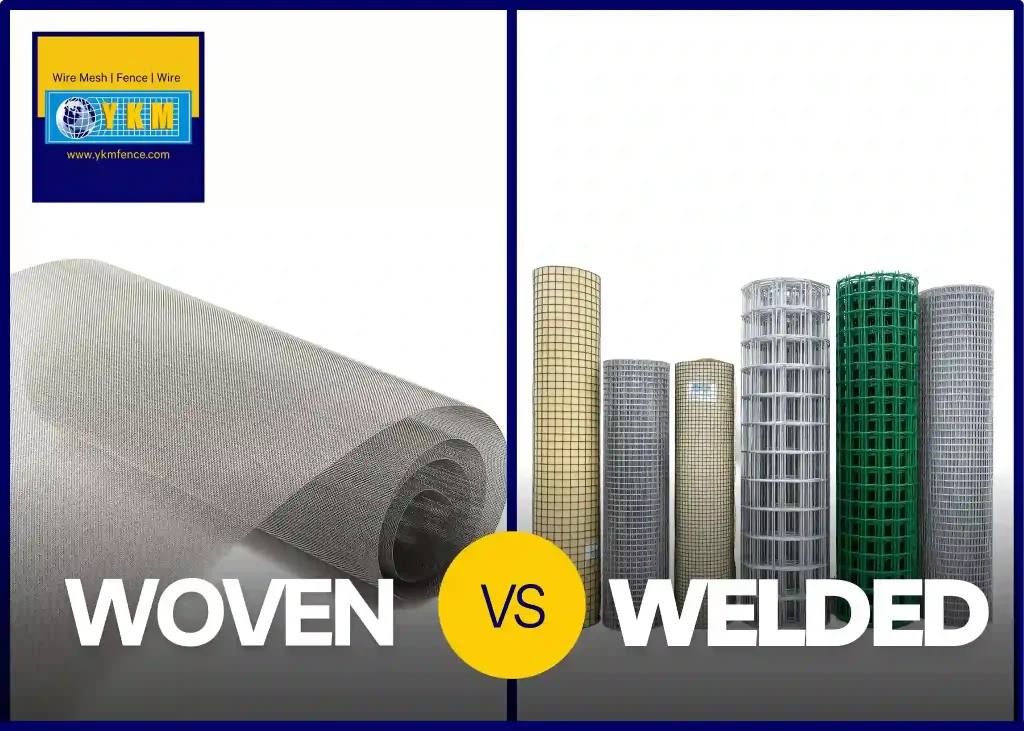
Now that we understand the basic principles of woven and welded wire mesh, let’s compare Woven vs Welded Wire pattern side by side:
Difference between Woven Wire vs Welded Wire pattern in terms of Strength and Flexibility
Woven wire fencing is known for its strength and flexibility. It can withstand impact from animals and harsh weather conditions without losing its shape. Welded wire, while strong, is slightly less flexible and may be more prone to bending upon impact. The choice between the two depends on the intended use of the fence.
Woven Wire vs Welded Wire: Uniformity
Woven: Can have variations in weave pattern.
Welded: Provides a consistent and uniform grid.
Woven Wire vs Welded Wire Mesh Cost
In terms of cost, woven wire is generally more affordable than welded wire. This makes it an attractive option for those with budget constraints. Welded wire, due to its durability and security features, tends to be more expensive. However, it can be a wise investment for certain applications.
Choosing between Woven Wire vs Welded Wire Pattern for Your Needs
When it comes to applications, when comparing woven and welded pattern has their on positive and negative sides. Selecting the right mesh pattern depends on your specific requirements. Here are some key factors to consider:
Strength: If you need high strength and stability, opt for welded pattern
Flexibility: For applications where adaptability is essential, woven pattern is the better choice.
Uniformity: If you require a consistent grid pattern, welded mesh is the way to go.
Budget: Consider your budget, as woven pattern mesh is generally more cost-effective.
